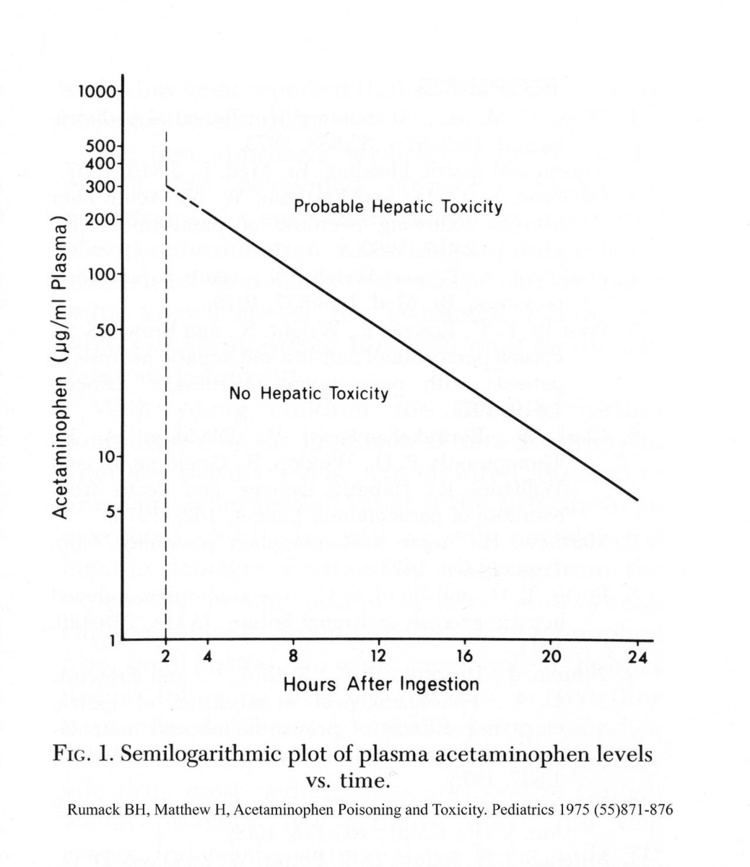 | ||
The Rumack-Matthew nomogram, also known as Rumack-Matthews nomogram or the Acetaminophen nomogram is an acetaminophen toxicity nomogram plotting serum concentration of acetaminophen against the time since ingestion in an attempt to prognosticate possible liver toxicity as well as allowing a clinician to decide whether to proceed with N-Acetylcysteine (NAC) treatment or not. It is a logarithmic graph starting not directly from ingestion, but from 4 hours post ingestion after absorption is considered likely to be complete.
In hands of skilled clinicians this nomogram allows for timely management of acetaminophen overdose. Generally, a serum plasma concentration (APAP) of 140-150 microgram/mL (or milligrams/L) at 4 hours post ingestion, indicates the need for NAC treatment. This nomogram is not used alone if the patient has altered mental status or if the history is not reliable. Rather, a second level should be drawn and plotted to see if the slope of the line remains at or above the nomogram. A formal half life may also be determined. Measure at time upon admission of the patient to the emergency room, and a blood value at time (t=4 hrs) should be obtained and half-life calculated. If half-life is more than 4 hours, then treatment is necessary to prevent hepatotoxicity and liver failure.
The original line starting at 200 microgram/mL at 4 hours was published in 1975 by Rumack BH. and Matthew H. When the NAC study was begun in 1976, the FDA required a line that was 25% below the original line now called the treatment line. The study line which is now referred to as the treatment line was created starting at 150 at 4 hours and is the usual line used in the United States to determine treatment of acetaminophen overdose. This was published in 1981.
